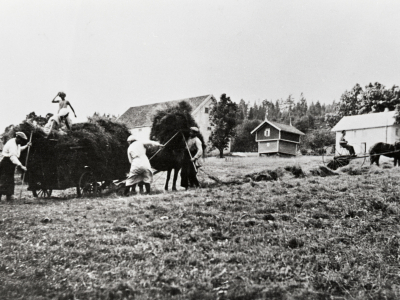The labour market in Norway

Watch the film
The labour market in Norway

Agriculture, forestry and fishing were the most important industries in Norway 150 years ago. Much has changed since then. In the late 19th century, factories were built and many people moved to the towns and cities to work. Many new jobs in industry were created during the first half of the 20th century. At the same time, many Norwegians left for the USA and settled there.

In 1950, more than 20 per cent of the population worked in agriculture. Today, the proportion has dropped to under 3 per cent. Norway nevertheless produces more food than before. An important reason for this is that we now have farming machinery that makes food production easier and more efficient.
After oil was discovered in the North Sea in the late 1960s, oil and gas production became an important part of Norway's industrial sector. Oil and gas have been very important to the Norwegian economy. They will continue to be important, although climate challenges will also necessitate a transition to ‘green’ jobs.
During the past 30 years, the labour market in Norway has again undergone major changes. Among other things, there has been a strong decrease in the number of people working in industry. Today, most jobs are found in service occupations. This means that if you are looking for a job in Norway, the chances are good for finding work in a shop or in the healthcare, school or kindergarten sectors, or in passenger transport. Many people can also find work in occupations relating to the development of information technology.
Talk together

- What does the table tell us?
- What is the distribution of different industries like in countries you know of?
- In which occupations are you likely to find work?
Select the right answer
When did oil and gas production become an important part of Norway's industrial sector?
Select the right answer
Where are most jobs in Norway today?
Select the right answer
Which industries were more important in Norway 150 years ago?
Select right or wrong
Read the statements. What is right? What is wrong?
Select right or wrong
Read the statements. What is right? What is wrong?
Select the right image
Today, most jobs are found in service occupations. Which images show service occupations? You can select more than one image.
